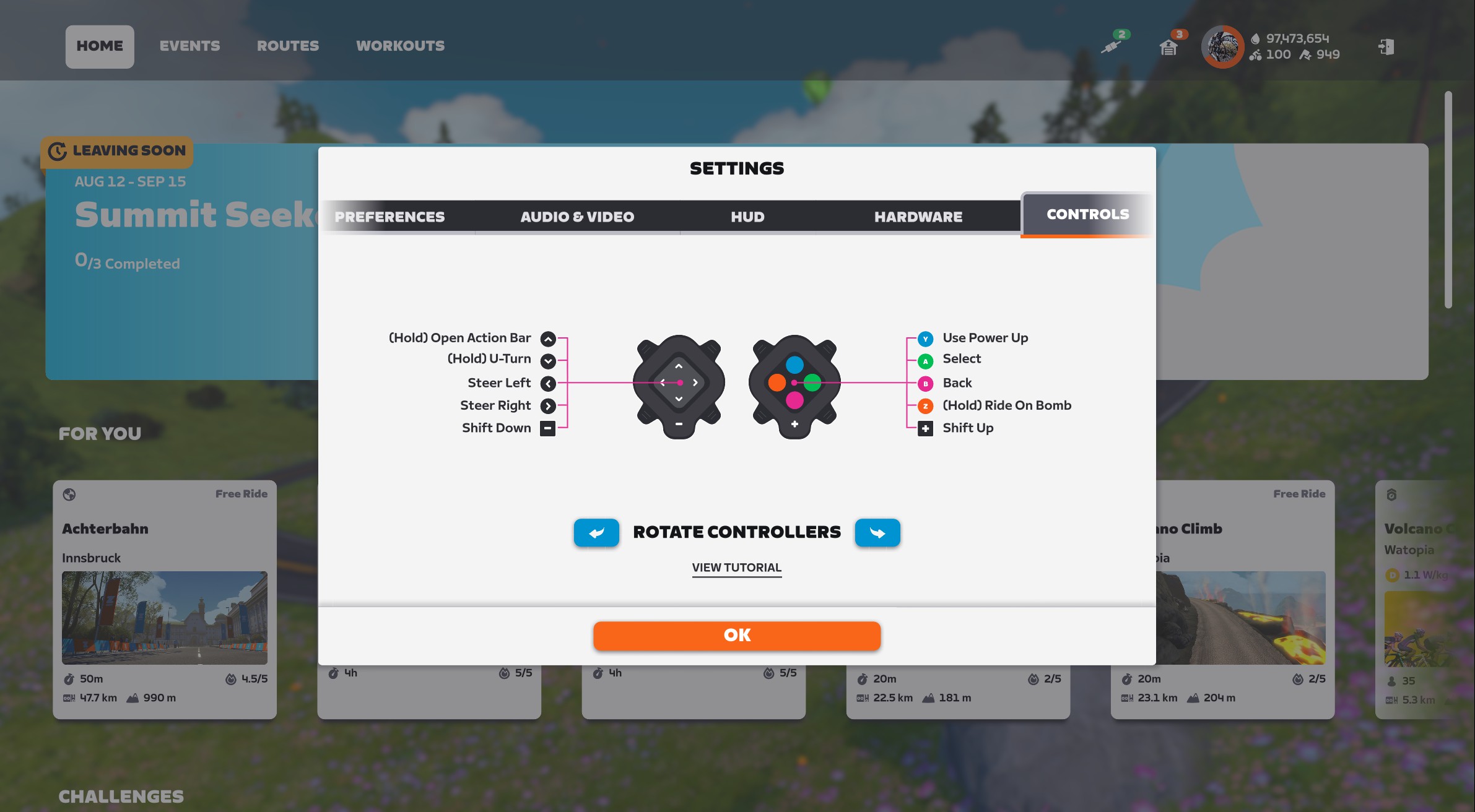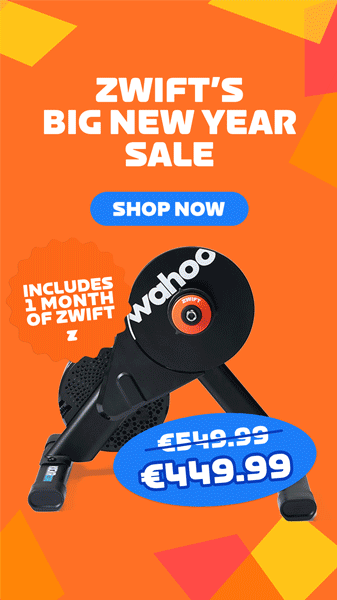Last week’s Fall 2025 This Season on Zwift press release included, as the first item of business, news that a fresh version of the Zwift Click begins shipping today, September 9th. Let’s take a good look at Zwift’s newest piece of hardware, including a full hands-on review!
Click v2, as we’ll call it, is replacing two different controllers for Zwift. First, it replaces the original Click, a simple device with a + and – button for shifting up or down. This comes as no surprise. But the bigger news is that Click v2 is also replacing the Zwift Play controllers. (To be clear: while Zwift Play can still be used in-game, it will no longer be sold.)
Here are some images from Zwift showing the Click v2 and how they mount easily to multiple locations on drop bars, as well as flat bars and TT bars:
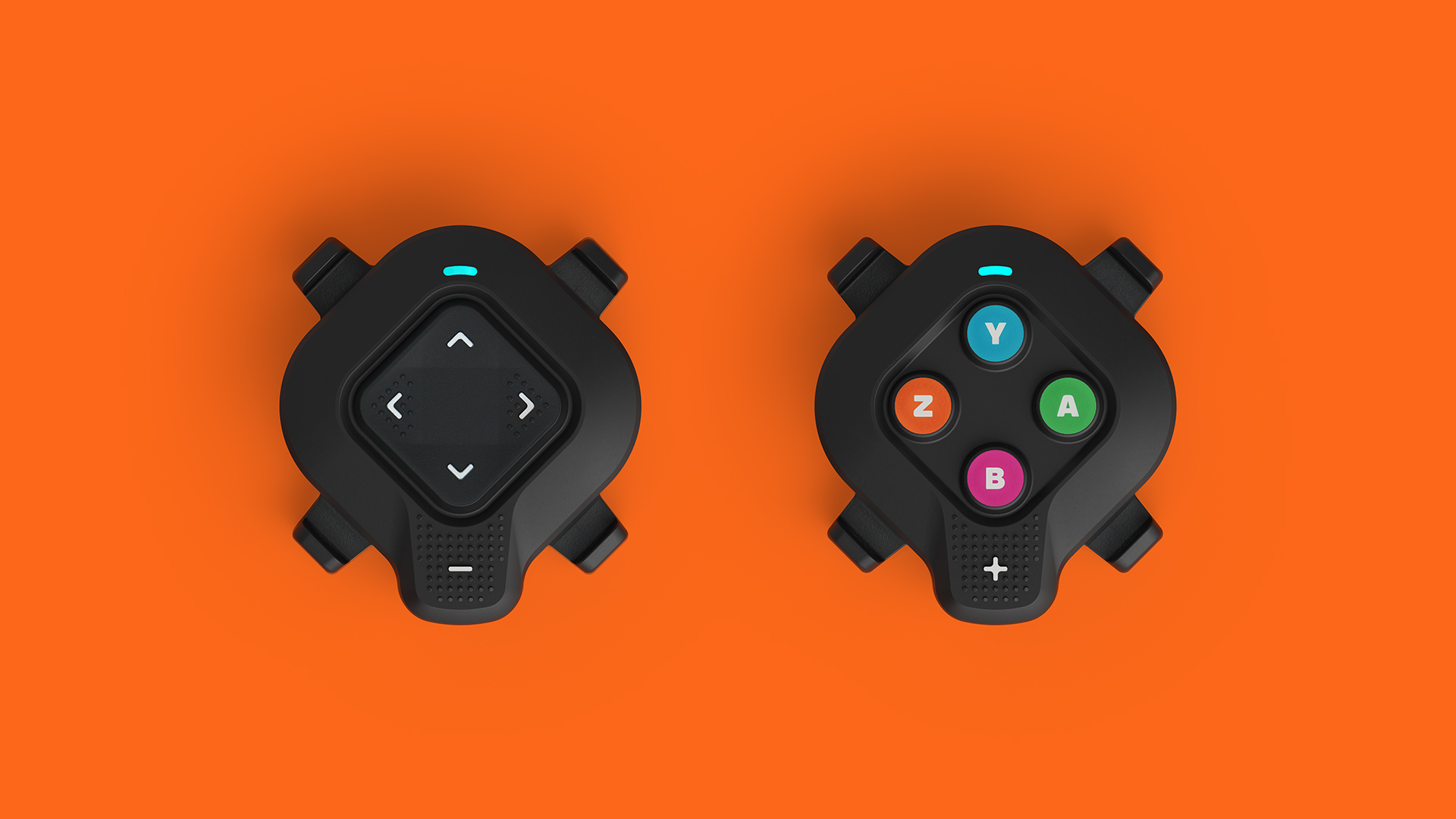
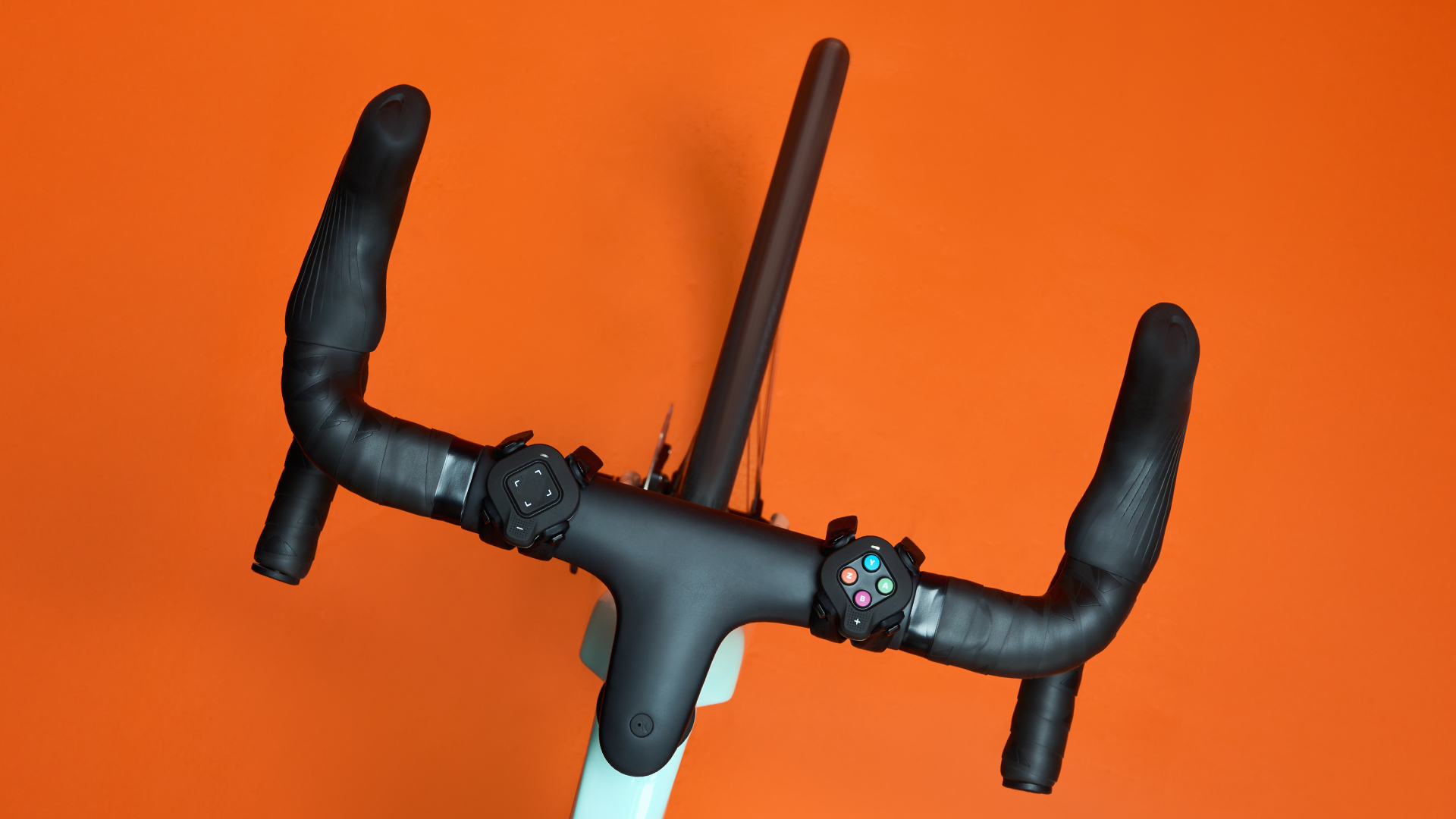
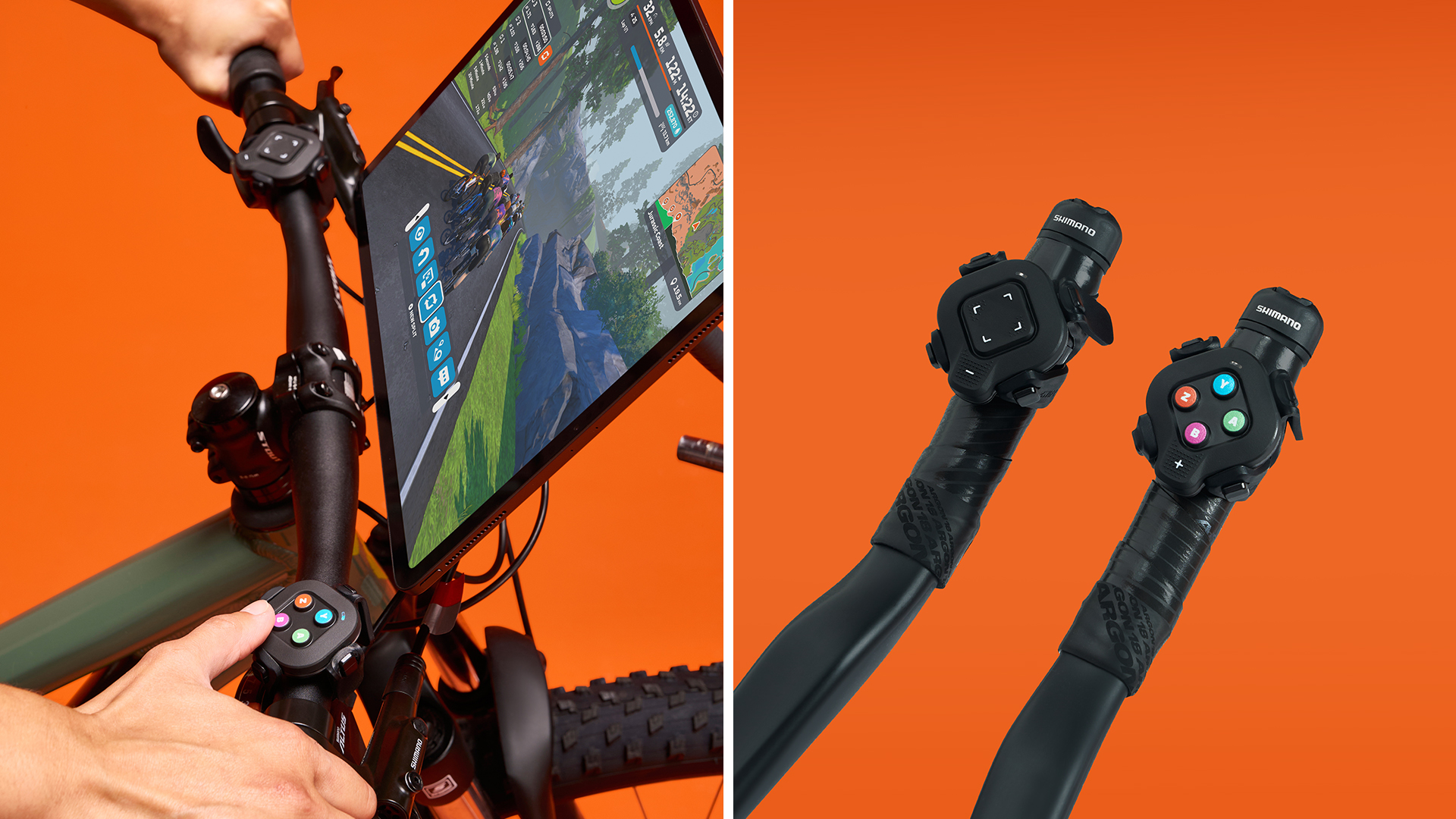
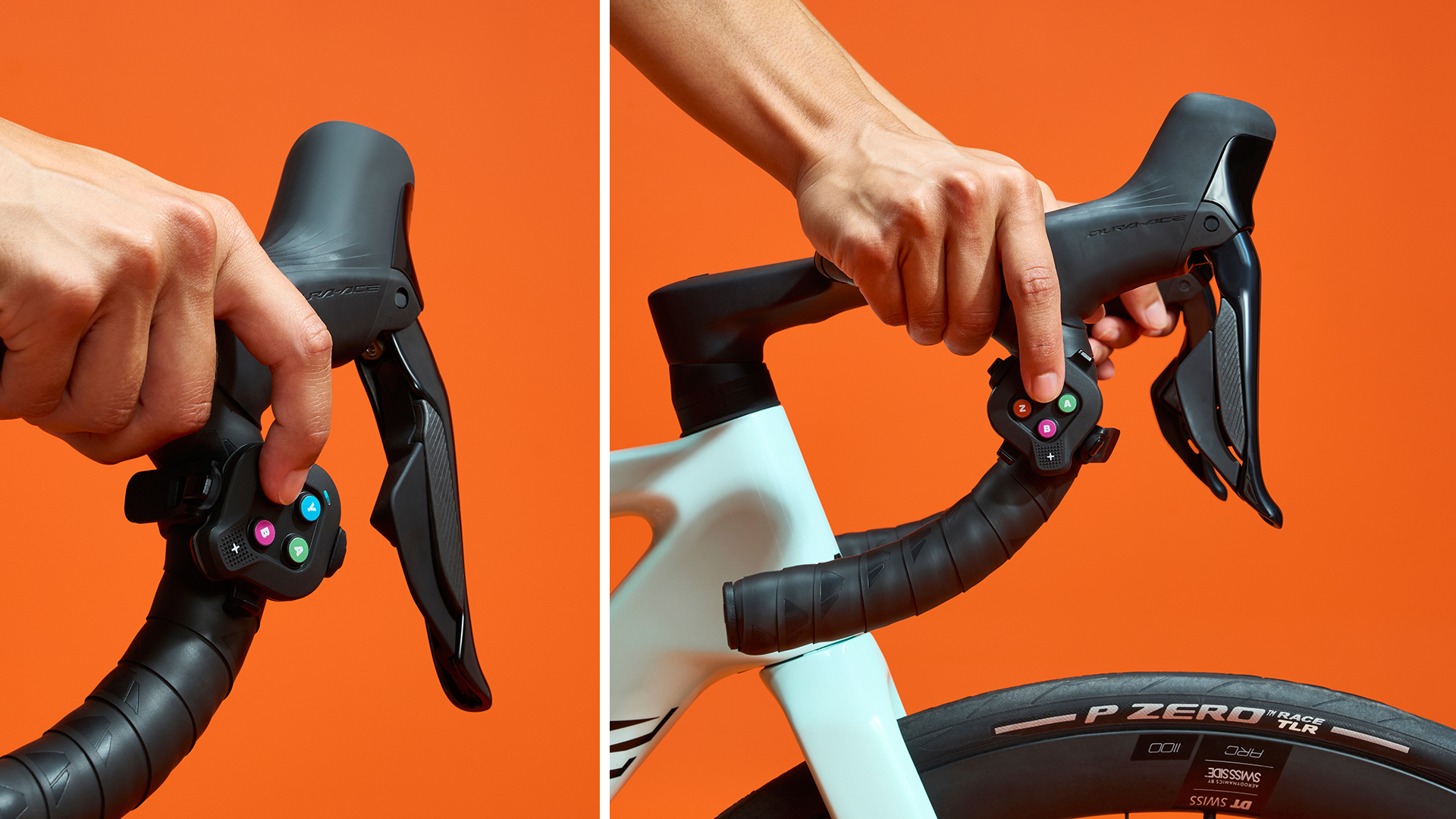
Zwift is not currently selling Click v2 as a standalone item, but Zwift Cog and Click upgrade kits for all Zwift Cog-compatible trainers are available at Zwift.com now for £49.99/€49.99/$49.99:
Additionally, the Click v2 is now being bundled with all Zwift Ready trainer shipments (see full list).
Click v2 Capabilities and Specs
Simply put, the new Click does everything Zwift Play does, apart from braking. That includes:
- Virtual shifting (for compatible trainers)
- Steering
- Game menu navigation
- U-turns
- Rearview camera in events
- Power up triggering
- Ride On bombs/returns
In terms of specifications, the list is short:
- Bluetooth connectivity only
- The two units are bridged together, so they use only 1 Bluetooth connection (good news for Apple TV users)
- Claimed 100-hour battery life (CR2032 coin cell)
Hands-On Experience
Setup and Onboarding
Click v2 is quick and easy to set up. In addition to the two Click controllers, the package includes four straps and two soft pads you can place beneath the controllers to more secure mounting on rounded bars:
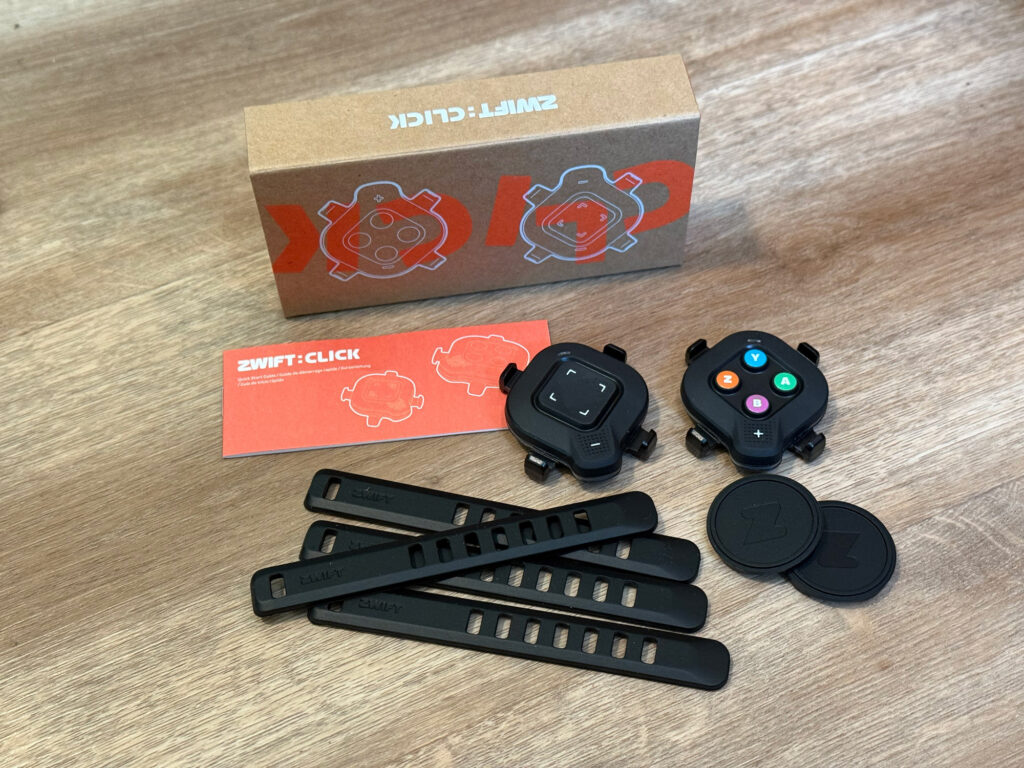
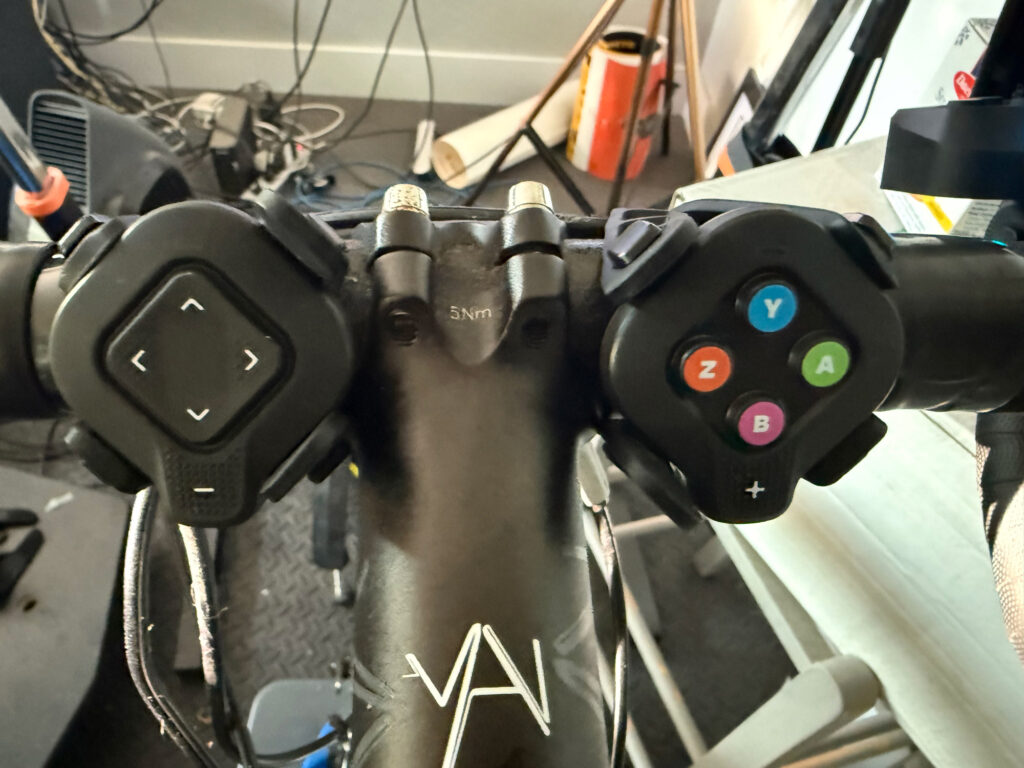
Clicking any button on a controller activates it, and an LED at the top of the controller will begin flashing blue. It turns solid blue once connected.
The first thing I did was open up Zwift’s Companion app and go to Zwift Hardware, where the app automatically detected the Click v2 controllers. The app then prompted me to perform a firmware update to version 1.1.0:
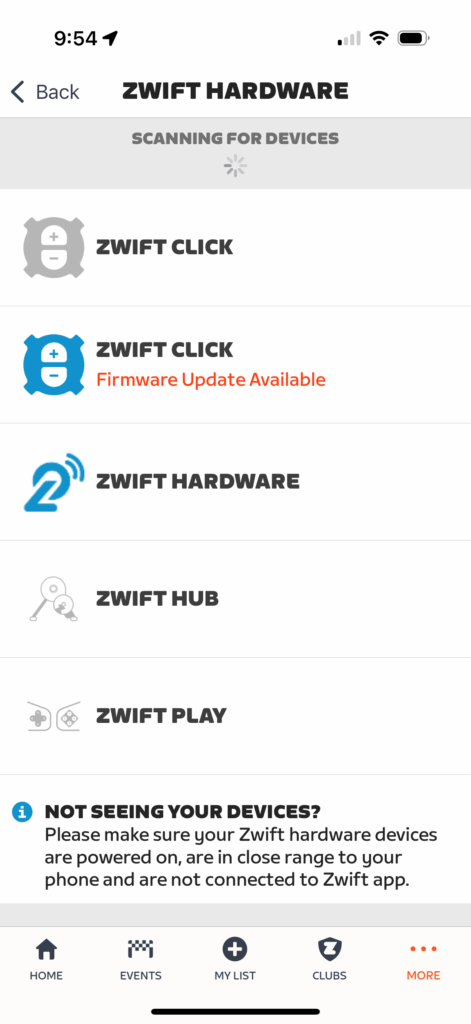
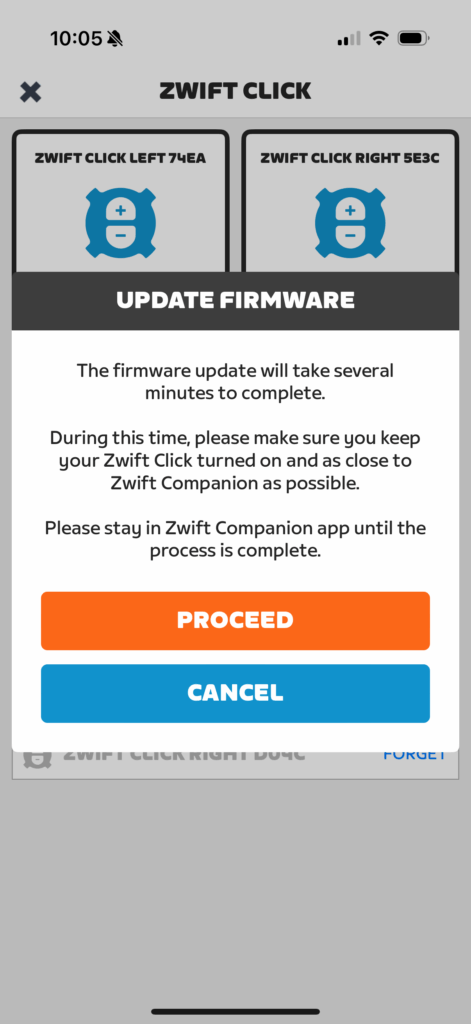
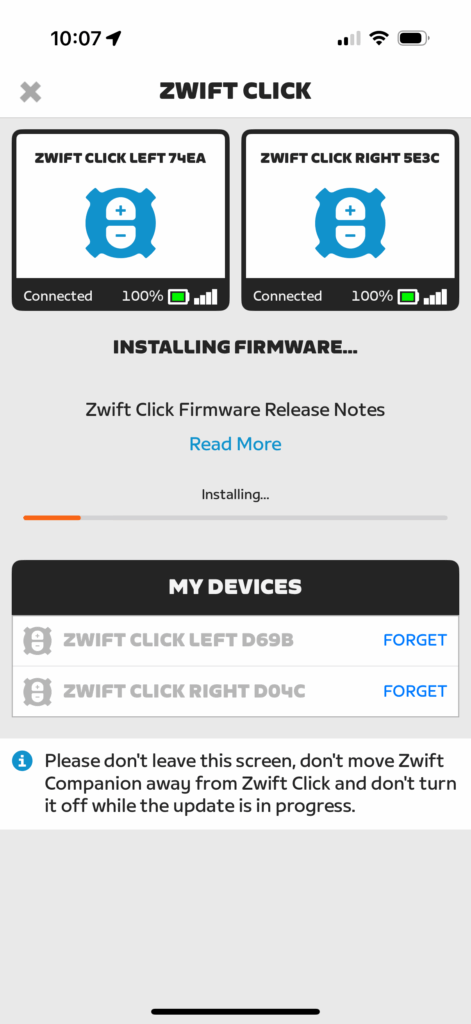
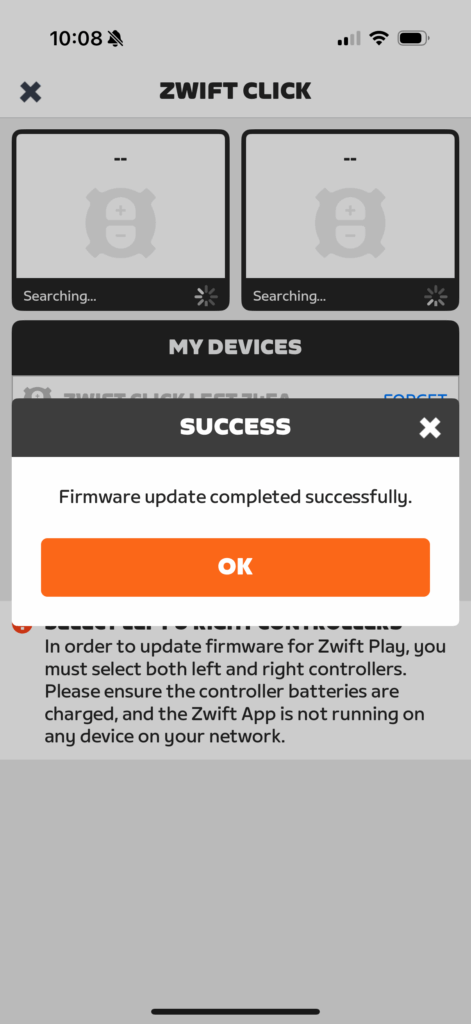
Once the Clicks were updated to the latest firmware, I started my Zwift session and paired the Click v2 (reminder: these are Bluetooth only):
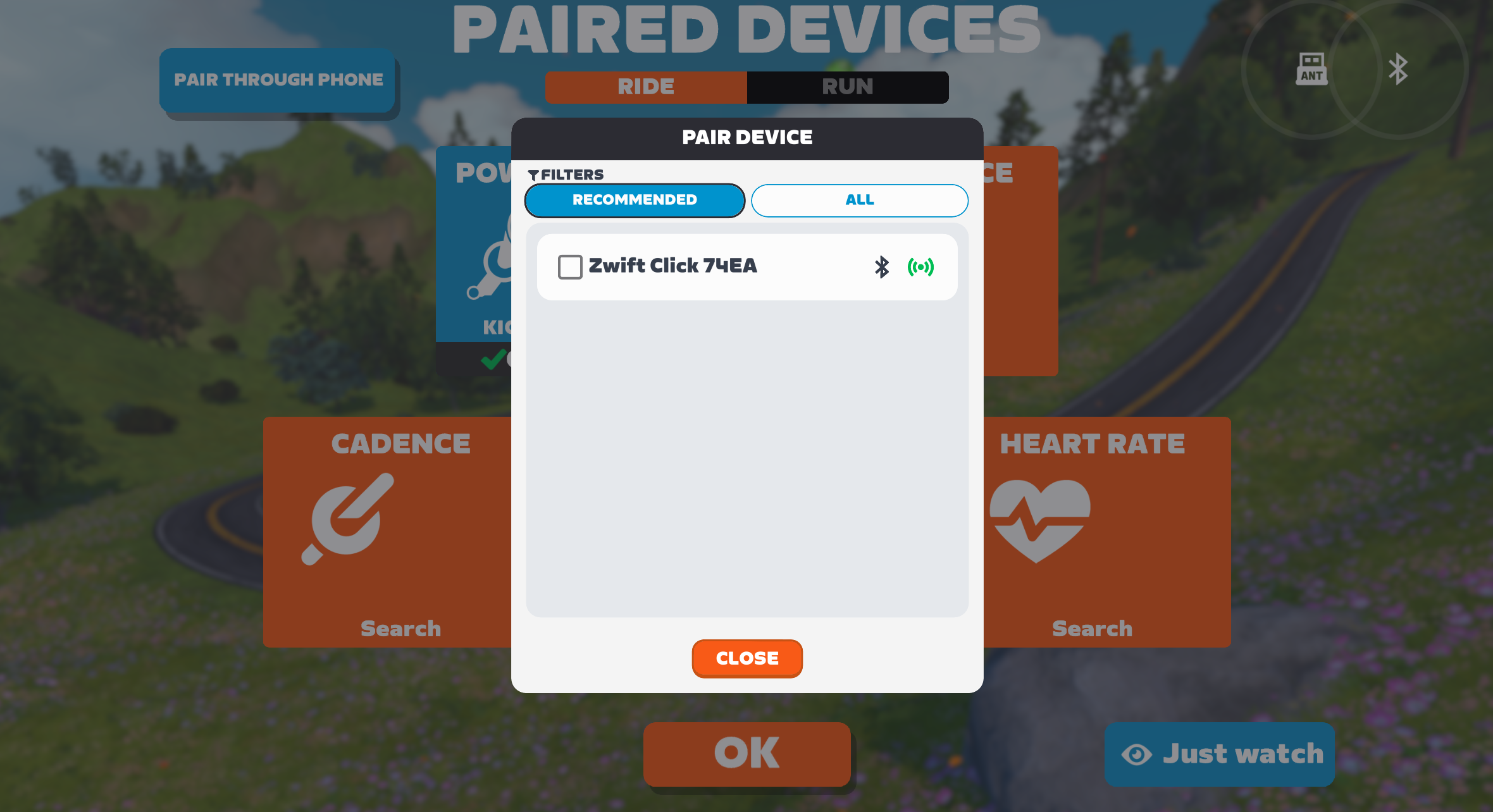
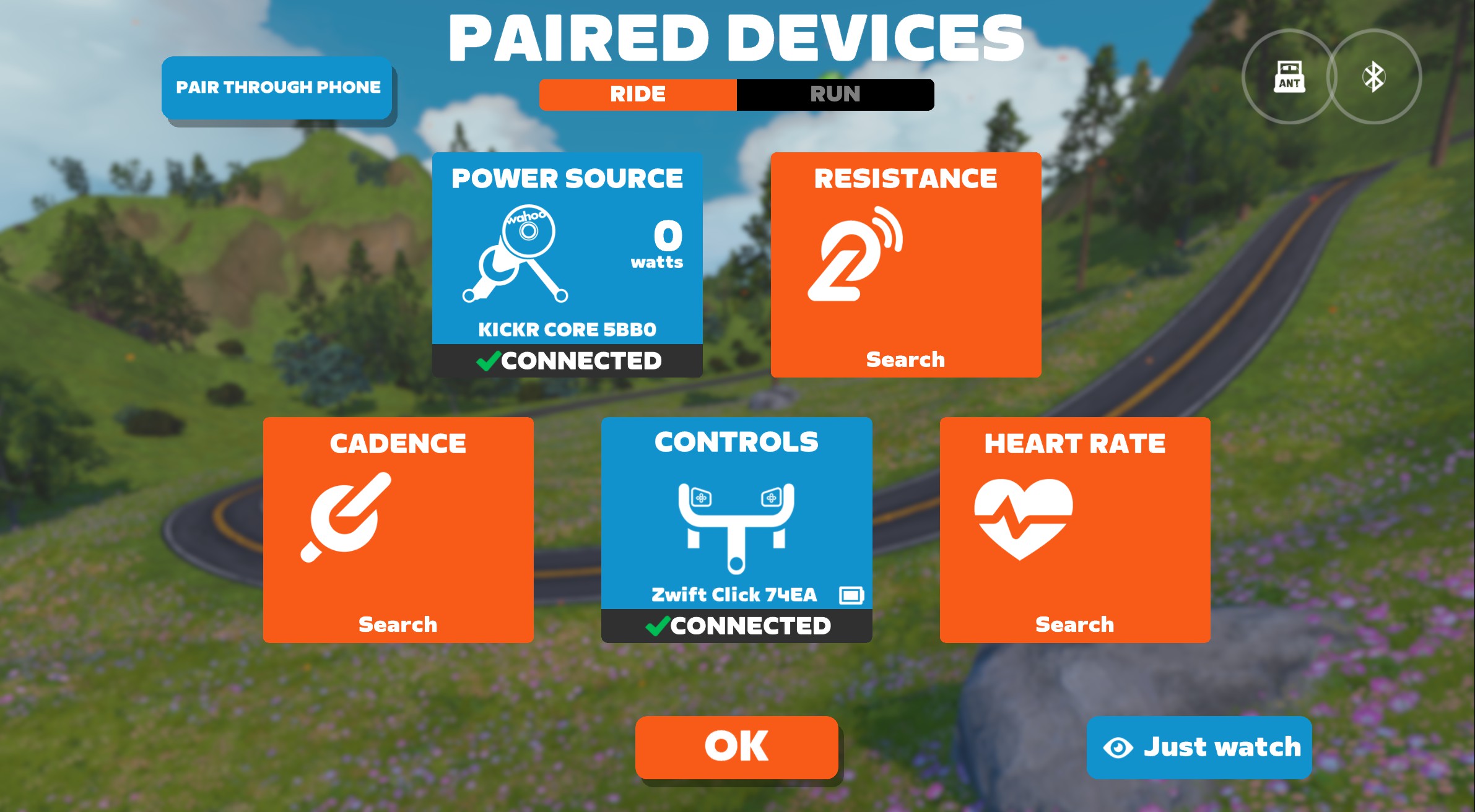
Before riding, I was greeted with a simple tutorial walking me through their capabilities:

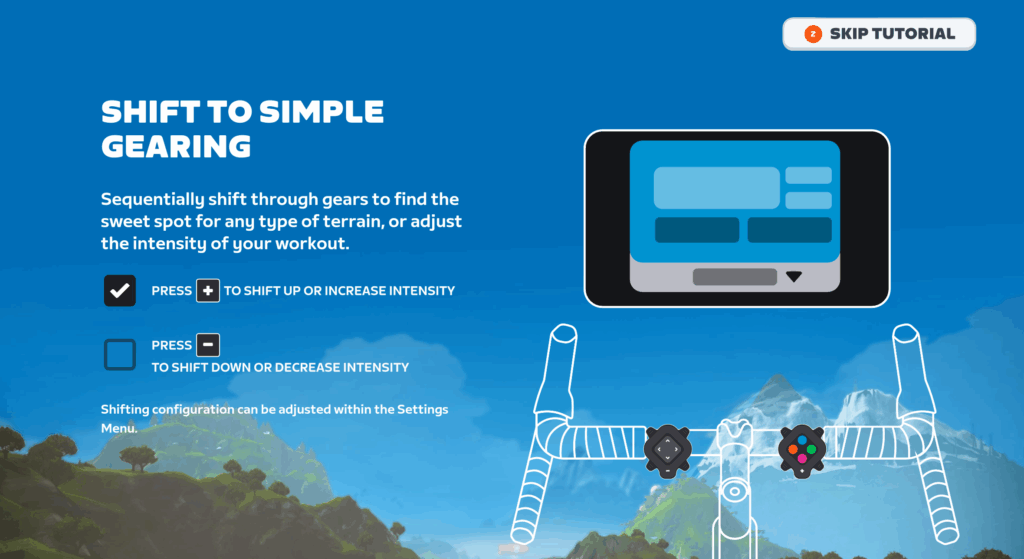
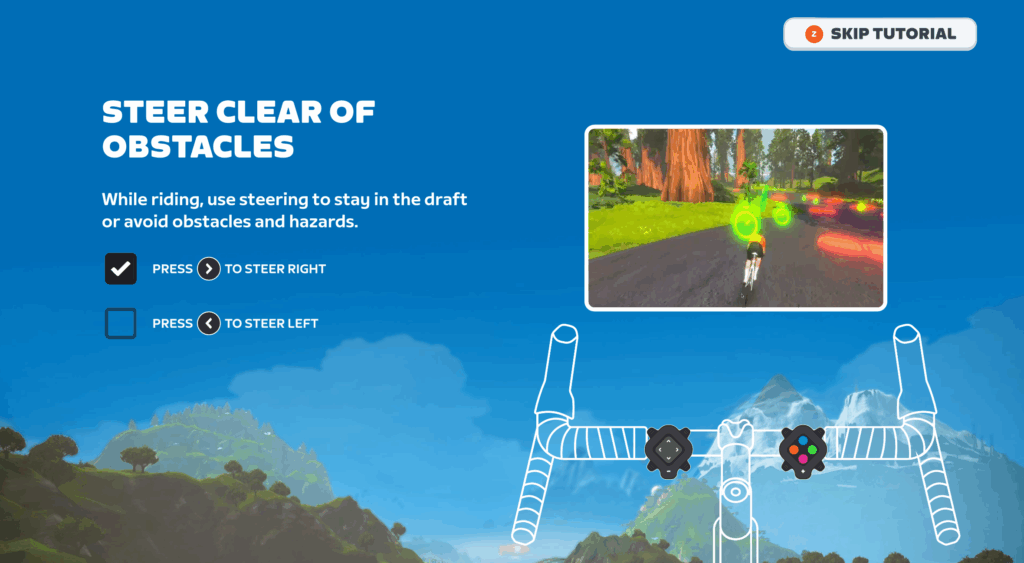
After finishing (or skipping) the tutorial, you’re ready to go! If you’d like, you can go to Settings>Controls and rotate the controllers, which may prove useful depending on mounting location:
Virtual Shifting
If you have a smart trainer that supports Zwift’s virtual shifting (see list of compatible trainers), Click v2 can handle the shifting duties. The – button on the left controller shifts down to an easier gear, while the + on the right controller shifts up to a harder gear. These also modify FTP bias in ERG workouts when shifting is disabled.
Shifting with Click v2 is just as responsive as with Zwift Play and the original Zwift Click, happening quickly and reliably.
I had the Zwift Plays installed on my bike, and added the Click v2 on the flats of my bars as shown above. I found I enjoyed pairing both the Plays and the Click v2 to my Zwift session, as the Clicks came in handy as satellite shifters and steering when I was riding on my bar tops.
Steering vs Intersection Selection
While the Click v2 does everything Zwift Play did (apart from braking), Zwift had to get a bit creative to squeeze all that functionality out of a pair of simple controllers.
Specifically, if you want to manually choose a turn at an intersection, you have to press A when the intersection option pops up, then choose your desired intersection with left/right arrows. (On-screen text reminds you how this works.)
Apart from this little quirk, steering is simple using the left/right arrows on the left controller.
Other Notes
I’ve been using the Click v2 on my main Zwift setup since May, which means I’ve logged over 100 hours of use. I changed the battery on one controller in my “pre-release” set early on, but they haven’t needed a battery change since.
Overall, I’ve been pleased with the feel and functionality of Click v2. The buttons are a bit easier to press than the Zwift Play, which is noticeable when you’re a Ride On bomber like myself.
Zwift has packed a lot of functionality into the new Click, and in a format that works on flat and tri bars, not just dropbars like the Zwift Play. While it doesn’t matter much to me personally (I’m a roadie), that’s a smart and inclusive move on Zwift’s part for sure. Plus, like I said above, even if you currently own Zwift Play and like their location, you’ll probably find Zwift Click v2 quite handy as satellite controllers.
(I even tested them on our in-house KICKR BIKE, adding them as satellite controllers. They worked just fine paired concurrently with the KICKR BIKE’s steering, allowing me to steering using the bike’s controls or the Click v2, as well as use all the Click’s buttons for navigating game menus, etc.)
Even though they’re only being sold with the Zwift Cog at this time, the price point is so low that I’d recommend them to any Zwifter with Bluetooth capabilities in their setup, as they put all the in-game menus and steering at your fingertips, even if you can’t do virtual shifting. They’re handy, reliable, and quite bomb-proof. My bet is they’ll quickly become this season’s most popular hardware add-on for Zwifters.
Buy Zwift Click v2
As already mentioned, Zwift is not currently selling Click v2 as a standalone item. Hopefully that will happen soon.
Until then, Zwift Cog + Click upgrade kits for all Zwift Cog-compatible trainers are available directly from Zwift for £49.99/€49.99/$49.99:
(Note: buying through the affiliate links above helps support this site.)
Questions or Comments?
Got questions about the new Zwift Click? Comments about Zwift hardware? Share below…
